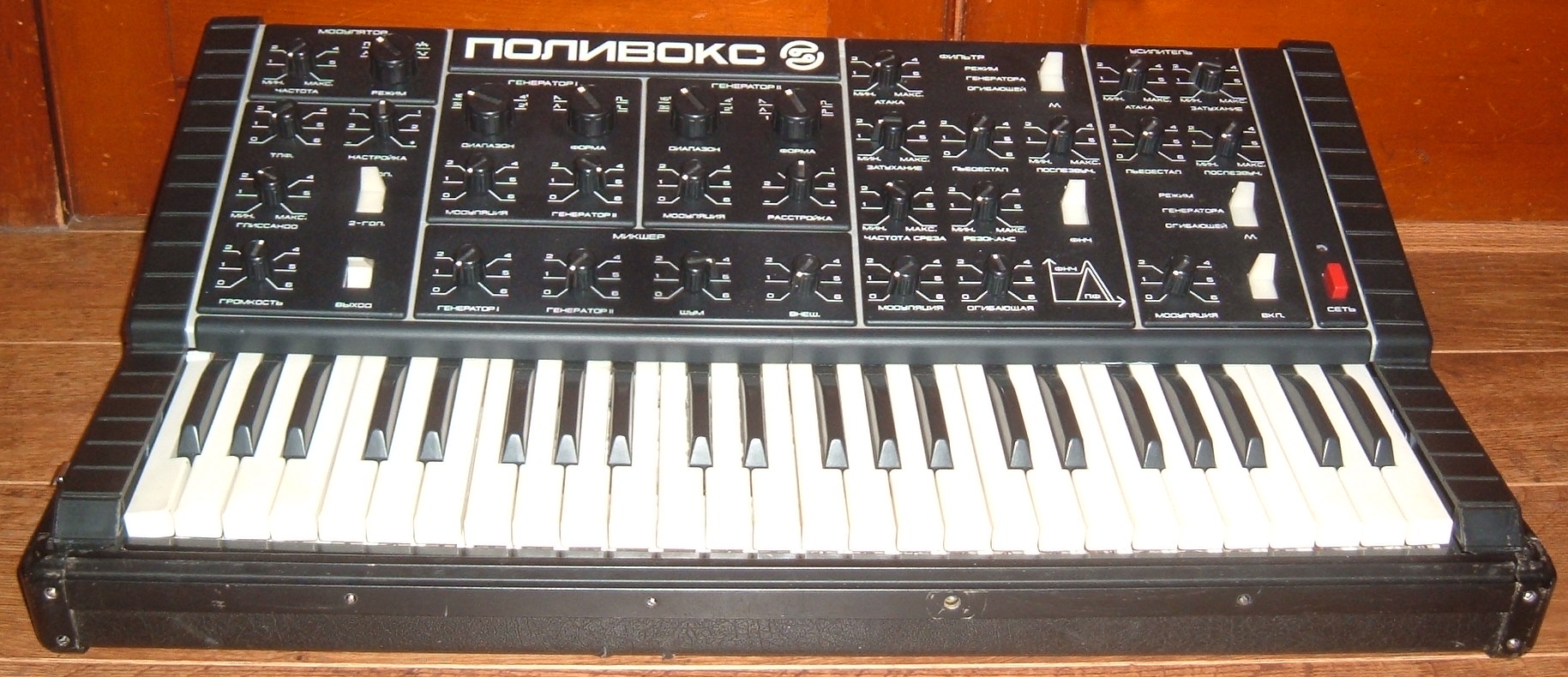- Polivoks
Infobox_synthesizer

image_caption =
synth_name = Polivoks
synth_manufacturer = Formanta Radio Factory
synthesis_type = Analog Subtractive
polyphony = 1-2
oscillator = 2 with triangle, saw, square and two different pulse settings
filter = Lowpass or bandpass
attenuator = ADSR for VCFADSR for VCA
left_control =
velocity = None
aftertouch = None
lfo = Triangle, square, noise, S&H
keyboard = 49-key| memory = None
ext_control = None
dates =1982 -1990
price =The Polivoks (also occasionally referred to as the Polyvox) (Rus.: Поливокс) is a duophonic, analog synthesizer manufactured and marketed in the
Soviet Union between1982 and1990 . It is arguably the most popular and well known Soviet synthesizer in the west, likely due to the uniqueness of its sounds.The Polivoks was designed at the Urals Vector plant, but actual production was handled at the Formanta Radio Factory in
Kachkanar ,Russian SFSR ["The A-Z of Analog Synthesisers Part Two: N-Z" by Peter Forrest, page 290.] . It was intended to appear and sound similar to American and Japanese synthesizers from companies such asRoland , Moog, andKorg . The Polivoks was engineered by circuit designer Vladimir Kuzmin with the appearance of the instrument influenced by his wife Olimpiada [Interview with Vladimir Kuzmin at http://analogik.com/instrument_polivoks.asp] , who took inspiration from the design of Soviet military radios. Its retail price upon release was 920 rubles and over its lifetime around 100,000 Polivoks were manufactured - sometimes with a production rate of up to 1,000 units a month ["The A-Z of Analog Synthesisers Part Two: N-Z"] .The Polivoks has some features that are either unusual or uncommon on most analog mono synthesizers including a filter that can be switched from low pass to bandpass and two envelopes that can be looped over the AD sections.
Due to its unique history and relative rarity, the Polivoks has become popular as much for its unique sounds as for its aesthetics. It is often used by bands who take inspiration from the
Soviet chic movement, as well as the "ostalgie " phenomenon in the formerEast Germany .References
External links
*http://analogik.com/instrument_polivoks.asp
*http://www.synthmuseum.com/polyv/polyvox01.html
*http://www.ruskeys.net/eng/base/polivoks.php
Wikimedia Foundation. 2010.
